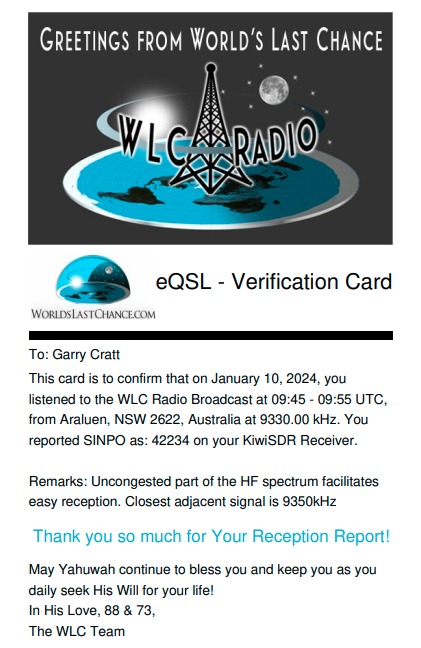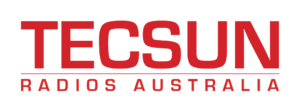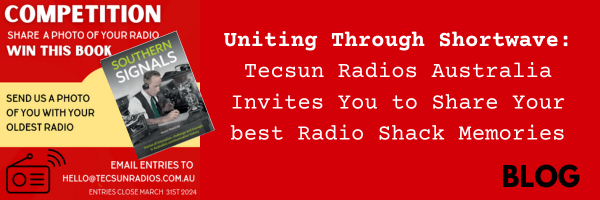
Tecsun Radios Australia Invites You to Share Your best Radio Shack Memories.
In a world buzzing with digital noise, there’s a timeless charm to the crackle and hum of a shortwave radio. It’s more than just a hobby; it’s a journey through time and space, a solitary pursuit that connects us across vast distances. At Tecsun Radios Australia, we understand the magic of shortwave, and we want to celebrate it with you.
Shortwave radio may seem like a solitary hobby, but it has a unique power to bring people together. Whether you’re tuning in to distant broadcasts or chatting with fellow enthusiasts online, there’s a sense of camaraderie that transcends borders and time zones. It’s about more than just the technology; it’s about the memories we create and the connections we forge.
That’s why we’re excited to invite you to participate in our latest competition. We want to see your favourite radio shacks and radios, old and new, and hear the stories behind them.
Whether it’s a vintage set passed down through generations or the latest Tecsun PL 990x, we want to celebrate the rich tapestry of shortwave radio culture.
To enter, simply snap a photo of you holding your oldest radio! Tell us about the memories it holds, the places it’s taken you, and the people you’ve met along the way. We will also need your permission to share this across our social media, blog, and EDM (our email newsletter)
One lucky winner will receive a free copy of “Southern Signals” by Hugh Tranter – a fascinating exploration of Australia’s history through the lens of communication.
“Southern Signals” reminds us that communication has always been at the heart of human history. From sea-stained dispatches to data sent back from deep space, it’s a story of how we’ve bridged vast distances through war and peace, exploration and growth. It’s a reminder of the power of technology to shape our world and bring us closer together.
So dust off your old radios, fire up your new ones, and join us in celebrating the magic of shortwave radio. Together, let’s create new memories and honour the rich legacy of this timeless hobby. Share your photos, share your stories, and let’s keep the spirit of shortwave alive for generations to come.
Please note this competition runs till the end of March 2024.
To enter the competition simply send a photo of you with your oldest radio and send it via email to hello@tecsunradios.com.au we will reply once received!
Join the conversation on social media using the hashtag #TecsunRadioMemories. We can’t wait to see what treasures you uncover and the memories you share.
Want to know more about this fantastic prize book? Click here https://www.nla.gov.au/stories/national-library-publishing/book-title/southern-signals
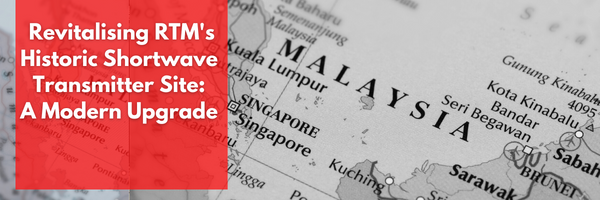
In a significant move to modernise its broadcasting infrastructure, Radio Televisyen Malaysia (RTM) has breathed new life into its iconic shortwave transmitter site located in Kajang, just south of Kuala Lumpur. Established in the early 1970s, the site has played a pivotal role in RTM’s history, even as the broadcaster scaled back its shortwave offerings over the years.
The need for rejuvenation arose when an aging Transradio DMOD3 exciter, responsible for feeding the site’s Continental Electronics shortwave transmitter, faced technical issues. Responding to the challenge, RTM made the decision to usher in a new era by installing the RFmondial LVe digital broadcast exciter.
While RTM’s current plans focus on analog broadcasts, the LVe introduces a forward-looking capability, supporting the potential for simulcasting both analog and DRM digital signals. This strategic upgrade positions RTM to adapt to evolving broadcasting standards and audience preferences.
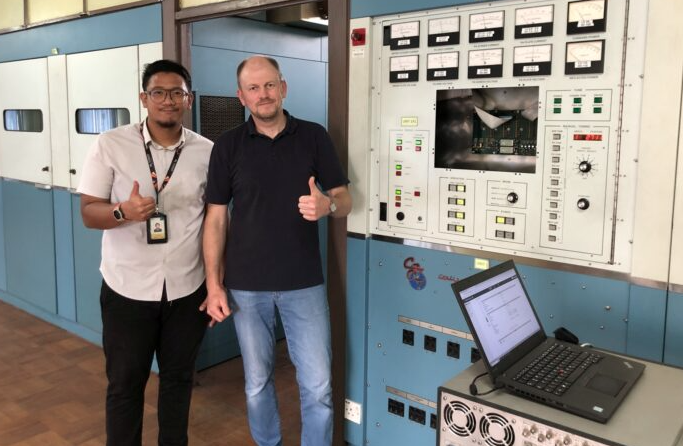
RFmondial’s Dr. Albert Waal (right) with RTM engineer Yusuf Azizi. (Photo Courtesy of RFmondial)
Dr. Albert Waal, head of hardware development for RFmondial, expressed his enthusiasm for the project, stating, “It was a great honor to upgrade this famous Malaysian transmitter site and to work with the very professional and kind staff of station engineer Yusuf Azizi and his team.”
This transformative initiative not only safeguards the operational continuity of the RTM site but also underscores the broadcaster’s commitment to staying at the forefront of broadcasting technology. As RTM embraces the future, the LVe exciter stands as a symbol of innovation, ensuring the site’s continued significance in the broadcasting landscape.
Source: Radioworld – https://www.radioworld.com/
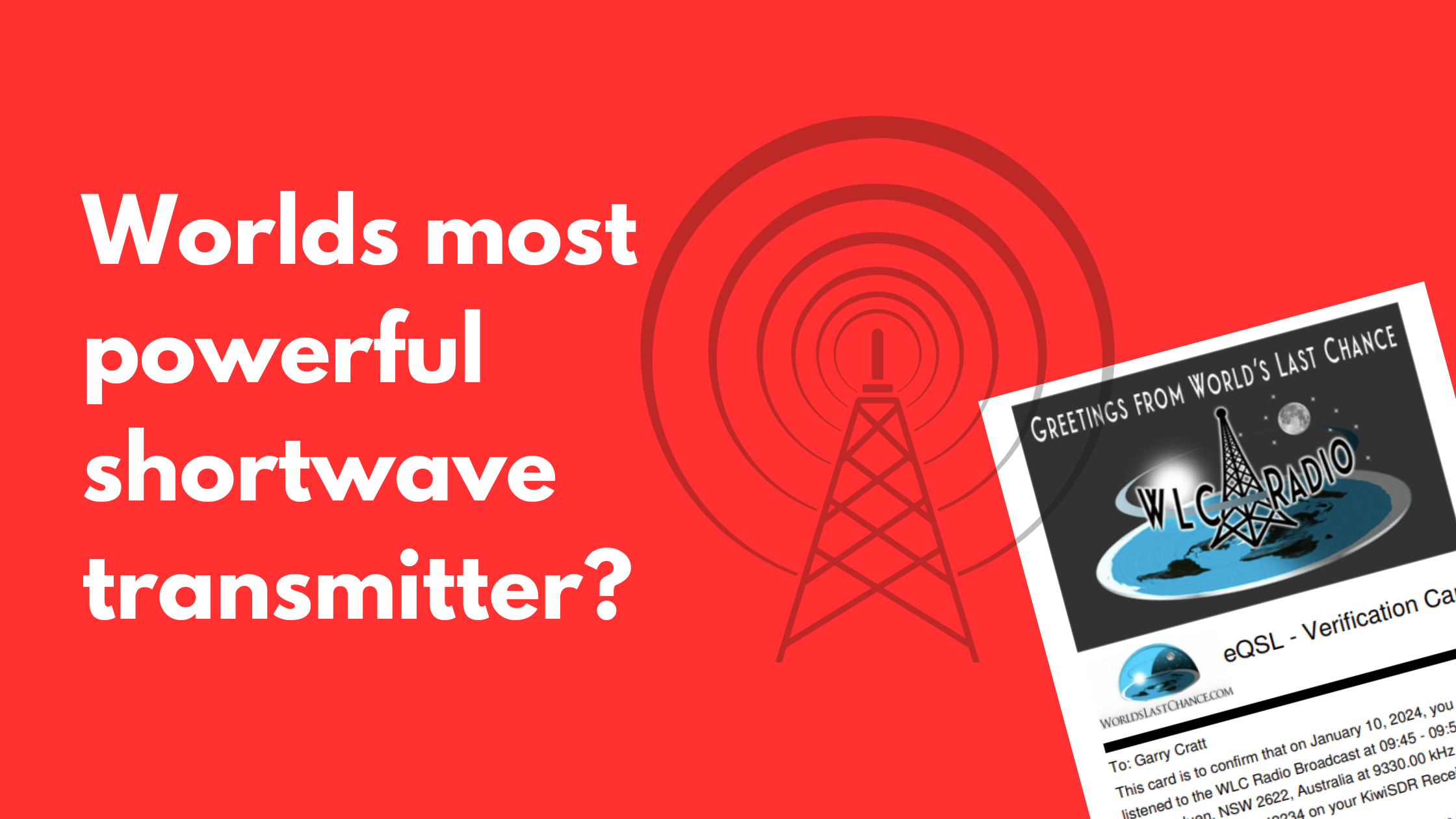
WBCQ is a shortwave station operating from Monticelle in Northern Maine, North America that transmits a wide (perhaps the widest) variety of programs on legal shortwave
The high-power antenna offers different radiation patterns and an antenna gain of up to 23 dB and uses a technology characterized by a single-shaft structural design,” according to Cestron International the installer of the antenna in a project summary.
The tubular shaft has a diameter of four meters. Its support design will absorb static and dynamic forces originating from the antenna components, allowing the system to function even under extreme weather conditions, according to Cestron.
The antenna consists of low- and high-band array antennas, positioned back to back, each equipped with a reflector screen, allowing WBCQ to access all shortwave frequency bands between 6 MHz and 26 MHz.
A computer-controlled and -monitored system manages rotation and turns toward the coverage area using the shortest possible path. “Intelligent drive control ensures the large rotating part of the structure is jolt-free, starting and braking to standstill with a high rotation speed of 1.2 degrees per second and a positioning accuracy of < 1 degree,” according to Cestron.
At 500 kW with an ERP of 20 MW, it is one of the most powerful shortwave stations in the USA.
See below QSL card Garry received from them.
